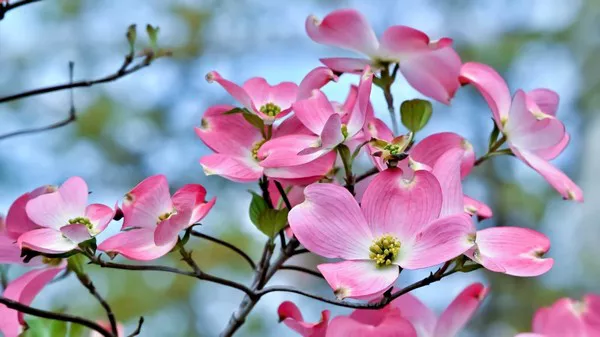Birth flowers are a captivating aspect of floral symbolism, often carrying historical, cultural, and emotional significance. In the realm of birth flowers, January boasts the elegant carnation as its representative bloom. This delicate yet vibrant flower has held various meanings throughout history and across different cultures, making it a fascinating subject to explore. In this article, we delve into the world of January’s birth flower, the carnation, and its symbolism, history, cultivation, and uses.
Carnation: An Emblem of Fascinating Symbolism
The carnation, scientifically known as Dianthus caryophyllus, is a perennial flower that belongs to the family Caryophyllaceae. Its name is derived from two Latin words: “dios,” meaning gods, and “anthos,” meaning flower. This translation underscores the flower’s divine associations and its significance in various mythologies and cultures.
1. Cultural Meanings and Significance
Innocence, Love, and Fascination: Carnations are often associated with sentiments of love and fascination. They are commonly gifted on occasions like weddings, anniversaries, and Mother’s Day as a symbol of affection and admiration. Lighter shades of carnations, such as white and light pink, convey innocence and pure love.
Admiration and Gratitude: Darker shades, such as deep red or purple, are often used to express admiration and gratitude. These hues symbolize deep emotions and respect for someone’s achievements or qualities.
2. Birth Flower and January Birthdays
As January’s birth flower, the carnation holds a special place in the hearts of those born in this month. It represents the unique characteristics of January-born individuals, such as their tenacity, determination, and beauty. The flower’s association with the New Year also aligns with the idea of new beginnings and fresh starts.
A Storied History: Carnation Through the Ages
The carnation’s rich history can be traced back over 2,000 years, making it one of the oldest cultivated flowers. Its journey through various cultures and eras has left an indelible mark on its symbolism and uses.
1. Ancient Origins
Carnations were originally cultivated in the Mediterranean region, specifically in Greece and Rome. They were held in high regard by the ancient Greeks and Romans, often used in garlands, wreaths, and ceremonial arrangements.
2. Christianity and Carnations
The carnation’s association with Christianity is rooted in legend. According to Christian belief, carnations sprouted from the ground where the Virgin Mary’s tears fell as she wept for Jesus carrying the cross. This connection has led to the carnation being known as the “flower of God.”
3. Victorian Language of Flowers
During the Victorian era, flowers were used to convey subtle messages and emotions that couldn’t be openly expressed. This gave rise to the “language of flowers,” or floriography. Carnations were an essential part of this language, with different colors conveying specific meanings. Red carnations represented admiration, white stood for innocence, and pink symbolized a mother’s undying love.
Versatility Beyond the Vase: Carnation Uses
Carnations aren’t just admired for their beauty; they also find various practical uses in diverse fields.
1. Culinary and Medicinal Uses
Carnations are known for their subtle clove-like aroma and flavor. This makes them a popular choice for adding a unique touch to dishes, beverages, and desserts. Additionally, carnations have been used in traditional medicine for their potential anti-inflammatory and antibacterial properties.
2. Fragrance and Perfumery
The essential oil extracted from carnations, known as “Dianthus oil,” has a distinct aroma that is both soothing and captivating. It’s a valued ingredient in the perfume industry, often used to create fragrances that evoke feelings of love and romance.
3. Textile Dyeing
The vibrant colors of carnations have historically been used as natural dyes for textiles. By extracting pigments from the flower, various shades of red, pink, and purple can be achieved, adding an eco-friendly dimension to textile dyeing.
Preserving the Legacy: Carnations in Art and Literature
Throughout history, carnations have inspired artists, writers, and poets to create works that capture the flower’s beauty and symbolism.
1. Artistic Depictions
Carnations have been depicted in countless paintings, sculptures, and decorative arts. They often symbolize love, purity, and devotion in artistic representations.
2. Literary References
Carnations hold a place in literature as well. In “The Secret Garden” by Frances Hodgson Burnett, carnations are mentioned as symbols of the garden’s rejuvenation and transformation. The flower’s fragrance is frequently used to evoke emotions and set the tone in various literary works.
Conclusion
The carnation, with its rich symbolism, historical significance, and diverse uses, stands as a captivating representative of January’s birth flower. Its journey from ancient times to modern uses showcases its enduring appeal and importance across cultures. As we admire the delicate petals and vibrant hues of the carnation, we are reminded of the timeless connections between nature, culture, and human emotions. Whether given as a heartfelt gift, cultivated in a garden, or admired in a piece of art, the carnation continues to enchant and inspire, making it a true gem in the world of flowers.


